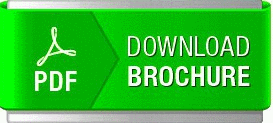
Ronald A Nelson
Wake Forest Institute for Regenerative Medicine, USA
Title: A chemically-defined, and xeno-free cell culture medium for clinical manufacturing
Biography
Biography: Ronald A Nelson
Abstract
Background: Animal-derived biological extracts, including animal serum, are commonly used in tissue culture medium to provide bioregulatory factors that support the maintenance of cell viability and promote cell proliferation. These biological extracts are not chemically defined, are inconsistent from lot to lot, and carry the risk of disease transmission. As such, these media supplements are not optimal materials for use in clinical manufacturing processes. Our group has developed a chemically defined media based on the known constituents within the well characterized biological extract human platelet lysate. This media has been shown to provide exceptional support for most cell types derived from the mesodermal embryonic germ layer.
Methods: Human sourced or recombinant versions of the major bioregulatory factors present in human platelet lysate were added to a modified DMEM-F12 minimal medium. The factors added included platelet-derived growth factor, transforming growth factor-β, insulin-like growth factor, vascular endothelial growth factor, fibroblast growth factor, hepatocyte growth factor, epidermal growth factor, and several other factors. Growth curves for an extensive panel of commercially available human primary cells were generated using an IncuCyte S3 Live Cell Imager. Preservation of cell phenotype was confirmed by immunofluorescent determination of cell type specific functional proteins.
Results: Proliferation rates for most mesoderm derived cell types in the chemically defined medium were equivalent or superior to proliferation rates measured in the cell supplier’s recommended, chemically undefined medium. Preservation of functional biomarker expression indicated that cell phenotype was maintained across multiple cell passages for each cell type. However, two endothelial cell types, human umbilical vascular endothelial cells and human dermal microvascular cells, did not proliferate in the chemically defined medium.
Conclusion: A chemically defined cell culture medium based on the known constituents of the biological extract, human platelet lysate was formulated using human sourced and recombinant protein bioregulatory factors. This media formulation was shown to support proliferation and preservation of phenotype for most cell types of mesodermal origin. Because this medium is chemically defined and xeno-free, it represents an optimal reagent for use in clinical manufacturing processes.

